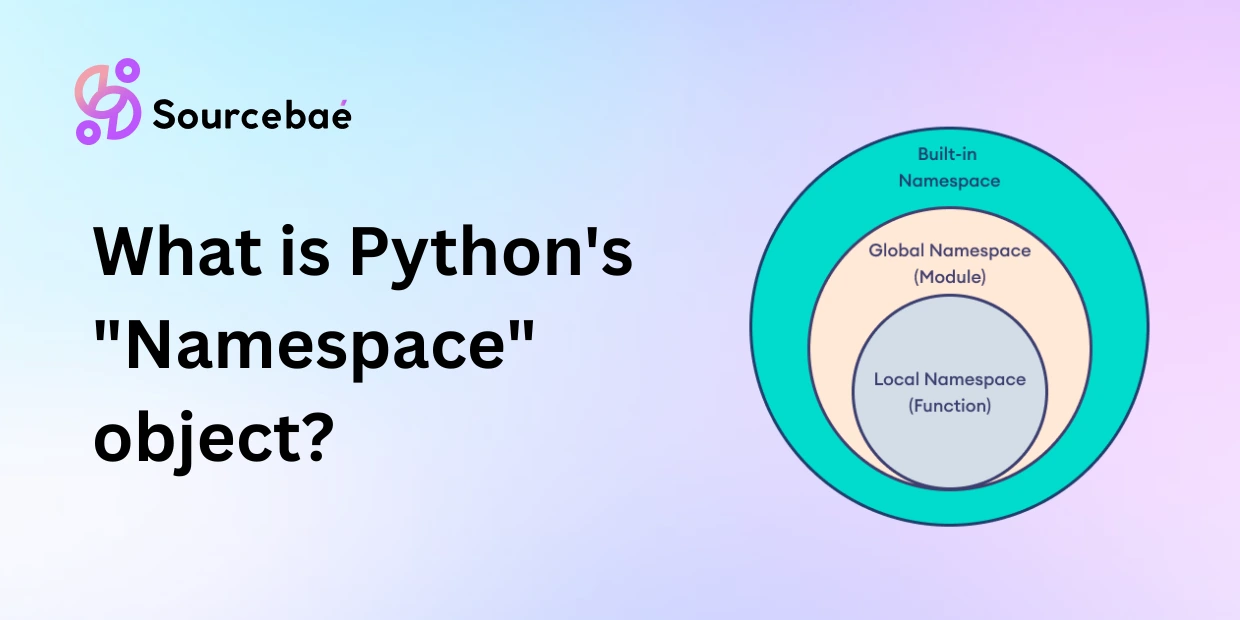Python is a versatile and widely-used programming language celebrated for its simplicity and readability, making it easy for developers of all experience levels to learn and maintain. Whether you’re creating small scripts, complex web applications, or powerful data-processing pipelines, proper organization of code is crucial. One fundamental yet frequently overlooked concept behind proper Python code organization is the Python’s Namespace.
If you’ve ever encountered keyword arguments handling or parsed command-line arguments with Python’s argparse module, you’ve probably encountered Python’s namespace object—but what exactly is this object, and how does it contribute to cleaner, readable code? In this blog, we’ll delve deeply into understanding the namespace concept in Python, focusing particularly on Python’s Namespace object, specifically the commonly-used argparse.Namespace.
What Exactly is a Namespace in Python? (Conceptual Overview)
A namespace in Python is like a dictionary—a container or mapping that clearly associates names with particular objects. Just like a surname helps differentiate one “John” from another within a large group, namespaces differentiate identifiers (Python names like variables, functions, and classes) to avoid naming conflicts.
Python employs multiple namespaces for clarity and order:
- Local namespace: Specific to functions or methods.
- Global namespace: Accessible throughout a single module.
- Built-in namespace: Includes built-in Python functions like
print,len, and more. - Module namespace: Unique to each module or library you import.
Properly managing these namespaces ensures your variable and function names remain clear, unambiguous, and conflict-free for smooth development and debugging.
Check out: Python Namespace and Scope of a Variable
Introducing the Python Namespace Object (argparse.Namespace)
The Python standard library module argparse, commonly used for managing command-line arguments, uses a specific object called Namespace. Officially known as argparse.Namespace, this object neatly and intuitively stores command-line arguments as clear, easily accessible attributes:
Here’s a simple usage example:
import argparse
parser = argparse.ArgumentParser(description="Example Argument Parser")
parser.add_argument('--foo', help='Example argument', default=42)
args = parser.parse_args()
print(args.foo) # Outputs: 42
print(args) # Outputs: Namespace(foo=42)
In the snippet above, args is an instance of argparse.Namespace automatically created by .parse_args() method. It provides intuitive, dot-accessible names for arguments, making code readable and cleaner compared to alternative methods.
How Does Python’s Namespace Object Work Under the Hood?
Internally, Python’s namespace object is essentially a simple class instance that stores its data as attributes in its internal dictionary (__dict__). Every attribute you store within a namespace object is mapped directly onto Python objects.
Here’s how you might manually implement a simplified namespace object:
class Namespace:
def __init__(self, **kwargs):
self.__dict__.update(kwargs)
ns = Namespace(x=10, msg="hello")
print(ns.x) # 10
print(ns.msg) # "hello"
Python also includes a built-in simplified object provided by the types module that provides very similar functionality—types.SimpleNamespace:
from types import SimpleNamespace
my_data = SimpleNamespace(result=200, message="Successful")
print(my_data.result) # 200
Though simple to implement, these objects bring clarity into your code, especially for straightforward contexts requiring attribute-like access rather than dictionary key access.
Common Use Cases for Python’s Namespace Objects
- Argument Parsing (Most Common) The primary use of the namespace object is in argument parsing with
argparse:parser = argparse.ArgumentParser() parser.add_argument('--width', type=int, default=800) parser.add_argument('--height', type=int, default=600) args = parser.parse_args() print("Size:", args.width, "x", args.height) - Temporary Data Storage or Configuration Namespace objects serve well as neat storage holders for temporary variables, configuration data, or simple containers for mock or dummy data.
- Unit Testing Namespaces can neatly store testing configurations, mock object attributes, or controlled environments set explicitly for testing.
Benefits of Python’s Namespace Object
- Readability and Cleaner Code: Attribute style (
args.value) access is simpler and more intuitive than dict notation in most cases. - Clear Organization: Easy way to manage function arguments, command-line inputs, or configurations clearly scoped as attributes.
- Preventing Naming Conflicts: Clearly distinguishing similarly named identifiers from different contexts, enhancing code maintainability and debugging.
Potential Pitfalls or Common Misunderstandings
Some newcomers to Python might confuse the general concept of namespaces (the organizational scheme) and the specific argparse.Namespace object. Here’s clarity on differentiating these crucially:
- Namespaces (general): Abstract containers that maintain unique identifiers within specific contexts.
- Namespace objects (
argparse.Namespace): Concrete, accessible Python objects specifically made for storing parsed argument values.
Another typical misunderstanding is confusing Python dictionaries and Namespace objects. Dictionaries are intended for dynamic key-value storage, whereas namespace objects excel where attribute-style access is clearer and more natural.
Best Practices for Working With Python’s Namespace Objects
- Utilize namespaces objects when attribute-style access enhances readability.
- Always use descriptive and clear attribute names.
- Maintain smaller, clearly defined scopes to prevent confusion later.
- Clearly document your namespace object’s usage and expected attributes.
- Understand when to consider alternatives (dictionaries for dynamic or unknown keys, dataclasses for heavy-duty structured data).
Alternative Approaches to Python’s Namespace Objects
Namespace objects aren’t always your best choice. Several alternatives exist depending on your need:
- Python Dictionaries: Better for unknown or dynamically changing keys.
- NamedTuples: Immutable, fixed structure, and memory-efficient; good for unchanging data.
- Dataclasses: A modern, structured, and robust alternative introduced in Python 3.7, best for structured configuration or instance state management.
Frequently Asked Questions About Python’s Namespace Objects
1. What Exactly is a Python Namespace?
A Python namespace is essentially a mapping that associates identifiers (variable names, function names, class names) with specific Python objects. It ensures clarity and prevents naming conflicts.
2. Are Python’s Namespace and argparse.Namespace the Same?
No, the namespace concept is general in Python, while argparse.Namespace is a specific type of Python object designed to comfortably store parsed argument values from command-line interfaces.
3. Can I Create My Own Custom Namespace-like Objects?
Absolutely, you can easily implement custom namespace objects either manually or using Python’s types.SimpleNamespace:
from types import SimpleNamespace
data = SimpleNamespace(item1="Python", item2="Namespace")
print(data.item1) # "Python"
4. When Should I Prefer Namespace Objects Over Python Dicts?
When your keys (attributes) are stable, known upfront, and attribute-style access enhances readability, that’s when you’d prefer a Namespace object.
5. What’s the Advantage of argparse.Namespace Specifically?
It simplifies accessing command-line arguments via clear, dot-syntax attribute access as opposed to the traditional dict-key access pattern, significantly enhancing readability.
6. Can I Convert argparse.Namespace to Dictionary?
Yes, you can easily convert it using Python’s built-in vars():
args_dict = vars(args)
7. Are There Any Downsides of Namespace Objects?
They lack full dictionary interfaces (such as .items()), and attribute handling isn’t dynamic by default. They’re good for simpler sources of data, not complex or highly dynamic structures.
Conclusion
Python’s namespace object, particularly seen as argparse.Namespace, facilitates clearer and more maintainable code. Understanding namespaces in Python empowers developers to better organize their variables, function names, and classes systematically, avoiding collisions and confusion. By keeping your scope clear, using intuitive attribute access, and clearly documenting your namespace usages, you ensure code that’s both scalable and maintainable.
Try leveraging Python’s namespace objects where readability and clean organization are priorities, enjoying the clarity they bring to your coding practices.






